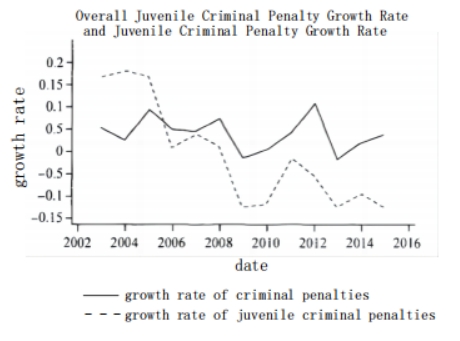A study on the mechanism of the relationship between economic development and juvenile crime rates

Published 03-01-2025
Keywords
- Economic Development,
- Juvenile Crime Rate,
- Correlation Mechanism,
- Wealth Disparity
Copyright (c) 2025 The Young Thinker's Review

This work is licensed under a Creative Commons Attribution-NonCommercial 4.0 International License.
How to Cite
Abstract
The connection between economic development and juvenile crime rates has always been a topic of interest for economists. The author attempts to dissect this issue from both theoretical analysis and empirical data perspectives. In terms of theoretical research, through dialectical analysis of the relationship between economic development and crime rates, the paper reveals the positive and negative impact mechanisms of economic development on juvenile crime rates. Moreover, considering the characteristics of the juvenile group, we also conduct optimization research on economic measures to prevent juvenile delinquency. In the empirical research section, combining data from the annual bulletins and statistical yearbooks of the Supreme People's Court, the relationship between economic development and juvenile crime rates is tested. It is found that from 2002 to 2015, the juvenile crime rate in China increased with the increase in per capita GDP. However, after considering the issue of wealth disparity, the above conclusion is completely reversed. The study indicates that under the condition of unchanged wealth disparity, economic growth has an inhibitory effect on juvenile crime.
References
- Tian He Cheng, Wan Guanghua, Huo Xue ji: "An Empirical Study on the Relationship between China's Economy and Crime from 1955 to 2007," in Journal of China Agricultural University (Social Science Edition), 2009, Issue 2.
- Wu Shi Wei: "Urban-Rural Income Gap, Economic Growth, and Crime Rates," in Journal of Guizhou University of Finance and Economics, 2015, Issue 4.
- Zheng Hong li, Luo Dahua: "The Role of Low Self-Control and Family Socioeconomic Status in Juvenile Delinquency—A Preliminary Empirical Study on the Causes of Juvenile Delinquency in China," in Youth Studies, 2009, Issue 3.
- Zhang Baoyi: "The Economic Living Conditions of Juvenile Offenders and Their Impact on Crime," in Youth Studies, 2001, Issue 12.
- Wang Zhiqiang: "A Study on the Relationship between Economic Living Conditions and Crime," in Journal of People's Public Security of China University (Social Science Edition), 2008, Issue 5.
- Chen Chun liang, Yi Jun Jian: "Income Disparity and Criminal Crime: An Empirical Study Based on Provincial Panel Data in China," in The Journal of World Economy, 2009, Issue 1.
- Lu Qi, Dong Ze Shi, Yao Dong, et al.: "A Survey Analysis Report on Juvenile Offenders in China in 2013 (Part I)," in Youth Crime Issues, 2014, Issue 3.
